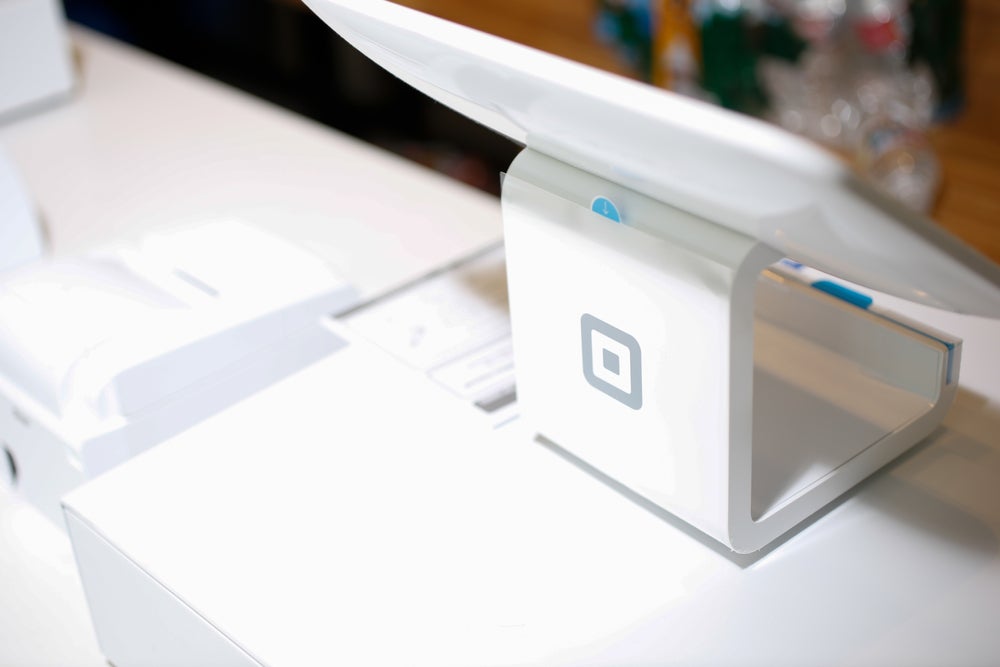benefit from South African-based mobile network operator (MNO) MTN
Group’s decision to make mobile phone banking and payments services
available to subscribers in all 21 countries in which it
operates.
The rollout, the most ambitious yet by a
MNO, also represents a major coup for South African mobile banking
technology developer Fundamo which has been selected by MTN as its
technology partner, awarding it a contract worth $9.7 million. This
is the largest mobile banking software deal ever announced,
Fundamo’s global head of business development, Aletha Ling, told
EPI.
In an industry where mobile banking vendors
are proliferating at a rapid pace, Fundamo’s nine years of
experience in difficult markets stood it in good stead, said
Ling.
Underscoring this, MTN’s head of mobile-money
international development, Dare Okoudjou, explained that Fundamo
was selected because of its ability to support the concurrent,
multi-country rollout and aggressive time to market that MTN
requires for its project.
“Their solution is mature, scalable and well
tested in developing markets, as well as being designed from the
ground up to be fully compliant with all banking regulations,”
stressed Okoudjou.
The deal also cements a long-standing
relationship between MTN and Fundamo dating back to 2005 when
Fundamo was selected by MTN and South African bank Standard Bank as
the technology supplier for their mobile banking joint venture, MTN
Banking. MTN, which had 17.2 million subscribers in South Africa at
the end of 2008, does not disclose the number of registered MTN
Banking users.
How well do you really know your competitors?
Access the most comprehensive Company Profiles on the market, powered by GlobalData. Save hours of research. Gain competitive edge.

Thank you!
Your download email will arrive shortly
Not ready to buy yet? Download a free sample
We are confident about the unique quality of our Company Profiles. However, we want you to make the most beneficial decision for your business, so we offer a free sample that you can download by submitting the below form
By GlobalDataReady to roll
Development of the latest MTN mobile
banking service began in 10 African countries in the second quarter
of 2008, said Ling. In what she termed “an intense process,”
development involved meeting regulatory requirements, undertaking
consumer trials and in all instances securing a local bank as a
partner.
The first of MTN’s mobile banking services was
officially launched in Uganda in early-March under the brand name
MTN MobileMoney. According to MTN it had 3.5 million subscribers in
Uganda at the end of 2008, giving it a market share of 52
percent.
Uganda was one of five countries in which MTN
began pilot trials in October 2008. The others were West African
countries Cameroon, Ghana, Cote d’Ivoire and Nigeria – where the
mobile banking platforms are now fully operational. At the end of
2008 MTN had a total of 36.7 million subscribers in these four
countries with the highest number, 23.1 million, in Nigeria where
MTN has a 44 percent market share. MTN is targeting a total of 32
million Nigerian subscribers by the end of 2009.
More recently MTN commenced five additional
pilot trials in the African countries of Benin, Congo Brazzaville,
Guinea Bissau, Guinea Conakry and Liberia where it had a total of
3.7 million subscribers at the end of 2008.
MTN MobileMoney service focuses on money
transfers, bill payments and topping-up mobile air times, said
Ling. Additional functionalities can be rapidly brought on stream,
she added.
The service is limited to MTN subscribers but
to use the basic money transfer facility does not require that they
have a bank account, said Ling. However, she added that experience
in other markets indicates that once consumers have become
accustomed to mobile money transfers there is a desire to upgrade
to full mobile banking services. With MTN’s service this includes
the option to receive a MTN MobileMoney-branded debit card that can
be used to withdraw cash from ATMs.
Bigger ambitions
Uganda and the nine other African
countries where the MTN MobileMoney service is in various stages of
rollout represent about 60 percent of the MNO’s total subscriber
base of 73.5 million outside of South Africa at the end of 2008.
Also in MTN’s sights are its other 30 million subscribers in 10
other countries.
“MTN is committed to extending its mobile
banking service to all countries in which it operates,” said
Ling.
Five of these other countries are in Africa,
namely Botswana, Rwanda, Sudan, Swaziland and Zambia where MTN had
a total subscriber base of 3.3 million at the end of 2008. More
significant are MTN’s operations in a number of Middle Eastern
countries.
By far MTN’s largest market in the Middle East
is Iran which it entered in 2006 via a then newly-established joint
venture, IranCell, in which it holds a 49 percent stake. A highly
successful venture, IranCell grew its subscriber base from 154,000
in 2006 to 6 million in 2007 and 16 million in 2008. MTN is
targeting a total of 22 million Iranian subscribers by the end of
2009.
Iran would be a “very exciting market,” for
the MTN mobile banking service, commented Ling. Indeed, the
country’s banking system remains in a developmental phase having,
for example, only introduced a real-time gross settlement system in
2002.
Iran still remains a largely cash-based
economy, a situation complicated by two factors. One is high
inflation – which according to the country’s central bank stood at
25.9 percent year-on-year at the end of February 2009. The other is
low denomination bank notes with the current highest denomination
note, the IRR50,000 note, worth the equivalent of a mere $5.10.
The payment card market in Iran is also
underdeveloped. Significantly, the 43 million mobile phones in Iran
outnumber payment cards by almost four to one. Iran has a
population of some 72 million people.
Other important Middle Eastern markets for MTN
are Syria, where it had 3.5 million subscribers and a market share
of 46 percent at the end of 2008, Yemen where it had 1.9 million
subscribers and a 38 percent market share, and Afghanistan, where
it had 2.1 million subscribers and a 30 percent market share.
SIM-based technology
For its mobile banking service MTN
has opted for a SIM card based solution. Though Fundamo’s platform
is compatible with all mobile banking solutions including
unstructured supplementary service data, short message service and
mobile internet, the SIM-based solution was selected because it
offers the highest level of security, Ling explained. With the SIM
solution no data resides on the handset and all incoming and
outgoing data is encrypted.
Preempting one of the biggest drawbacks of a
SIM-based solution, MTN has in many countries followed a policy of
incorporating mobile banking and payments capabilities on all new
SIM cards. However, in some countries it will have to implement a
SIM swap programme, said Ling.
Of note, Ling stressed that although the
SIM-based solution is strongly supported by MNO industry body the
GSM Association, there is general agreement among those involved in
mobile banking that other technology solutions also have a big role
to play.
The big roll all technologies will play will
be in the development of a global market where predictions of
massive growth abound. These include one made by consultancy Edgar,
Dunn & Co (EDC) which forecasts that there will be some 1.4
billion users of mobile banking and remittance services by
2015.
As with all forecasts EDC’s remains just that:
an educated estimate. However, Ling believes massive growth in the
use of mobile banking and remittances is very feasible and that the
market has entered “a big uptake phase.”
“We know the demand and need for mobile
banking services are there. We have already seen aggressive uptake
of mobile banking by consumers in early markets,” said Ling.
“If you had to design the perfect device for
financial services it would be the mobile phone,” she continued.
“No wonder we are seeing such a strong uptake.”
|
MTN GROUP |
|||
|
Geographic locations |
|||
|
Population (m) |
Mobile phone users (m) |
MTN market share (%) |
|
|
Nigeria |
143.3 |
51.6 |
44 |
|
Iran |
72 |
43.9 |
37 |
|
South Africa |
48.9 |
47.3 |
36 |
|
Sudan |
38.4 |
8.8 |
28 |
|
Afghanistan |
32.3 |
6.8 |
30 |
|
Uganda |
30.1 |
6.6 |
53 |
|
Ghana |
23.3 |
11.7 |
55 |
|
Yemen |
22.6 |
5 |
38 |
|
Cote d’Ivoire |
21.9 |
8.9 |
40 |
|
Syria |
20.4 |
7.8 |
46 |
|
Cameroon |
17.7 |
5.8 |
62 |
|
Zambia |
13 |
2.7 |
25 |
|
Benin |
8.3 |
2.9 |
35 |
|
Rwanda |
9.7 |
1.2 |
91 |
|
Guinea Conakry |
9.9 |
2.2 |
44 |
|
Congo Brazzaville |
3.7 |
2.2 |
38 |
|
Liberia |
3.3 |
0.8 |
65 |
|
Botswana |
1.8 |
1.5 |
60 |
|
Guinea Bissau |
1.5 |
0.4 |
82 |
|
Swaziland |
1 |
0.5 |
100 |
|
Cyprus |
0.9 |
0.8 |
38 |
|
Total |
524 |
219.4 |
|
|
Source: MTN Group |
|||





